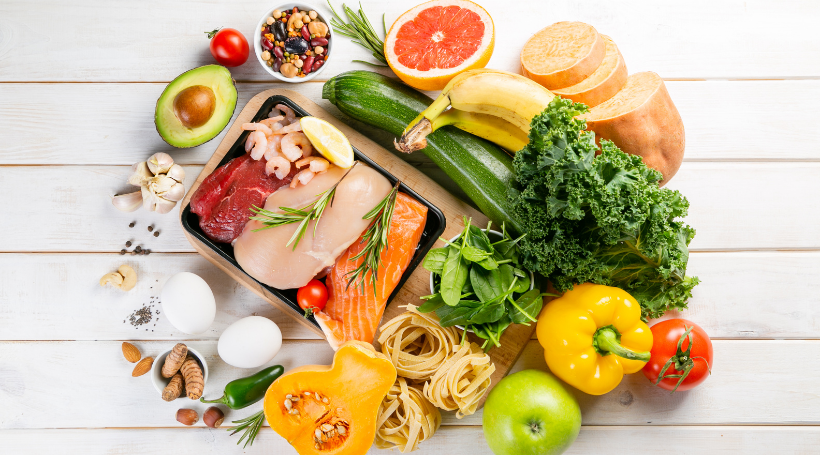“I’m on a juice cleanse.” “I only eat foods cavemen had access to.” “I don’t eat anything and when I feel like I’m about to faint, I eat a cube of cheese.”
There are all kinds of fad diets, but what does eating right really look like? We talked to Melissa Parisi, registered dietitian in the Nutrition & Diabetes Center at Jefferson Health – East Region (NJ), about achieving a balanced diet.
Where to start
It’s always good to start at the beginning. Take stock of your current eating habits, what your typical meal looks like in terms of the important food groups – protein, grains, fruits and vegetables – and figure out what you’re missing or what you have too much of. Balance is key.
“I recommend the plate method, using a nine-inch plate,” says Parisi. “Imagine cutting the plate in half. One half should be cut in half again, one portion for lean protein and the other for starch. The other half is for fruits and vegetables, and remember to lean heavily on the vegetables.”
There is no good and bad
Forget about good foods and bad foods, says Parisi, all foods fit. Meaning, there’s a time and place for every food. “There’s always a time and place to incorporate a cookie,” she says.

Melissa Parisi, Nutrition & Diabetes Center at Jefferson Health – East Region (NJ)
Sure, there are some foods we don’t want to eat a lot of very frequently, like simple carbohydrates for example, which won’t keep you full for long and are lacking fiber. But cutting out an entire food group because “carbs are bad” isn’t the way to go. Focus on the quality of the food you’re eating instead of whether it’s considered good or bad for you.
Should I be a vegetarian?
Switching to a plant-based diet, or cutting out meat, isn’t necessary for a balanced diet, but it does have its benefits if done right. Incorporating legumes, nuts and seeds, beans and soy in your diet can help fight inflammation, make you feel more regular, help with constipation and even help with chronic disease management.
And it doesn’t have to be all or nothing either. If you eat a lot of red meat, start by choosing one or two days a week to swap out that meat for something lighter like fish or a bean-based dish. “Make sure what you’re swapping out is being replaced with quality,” says Parisi. “For example, if you want to eat less meat, make sure you’re not choosing any meat substitutes that are highly processed with lots of added sodium.”
How to read an ingredient label
First of all, you should always be reading your food labels (unless you’re buying those fresh fruits and veggies, of course). Parisi recommends looking for two things: processed ingredients and sugars. But remember, we’re trying to avoid highly processed foods and foods with added sugars.
“Luckily, added sugars have its own line in the nutrition information, which is helpful,” says Parisi. “But remember that it can show up in the ingredients list as things like honey, molasses, agave and different syrups. And for processed foods, some of them, like canned veggies and bread, can still have a good amount of beneficial ingredients like whole grains and vegetables.”
And remember, the ingredients on food labels are listed in order of how much is used – the most-used ingredients are listed first. If you don’t recognize that first ingredient or can’t pronounce it, odds are it’s highly processed.
Wooder
How long has it been since you took a sip of water? (Probably a while, right.) Go grab your emotional support water bottle…we’ll wait.
Ok, now that we’re hydrating, water is a wonder tool for our bodies. It gets rid of waste, moves nutrients to where they’re needed along with other benefits. Parisi recommends drinking at least 8 cups (64 oz.) of water a day, maybe more depending on your weight.
You can make it fun by adding some cucumber and mint or crushed up melon or even a splash of juice, but be aware of caffeine and added sugars. “Coffees and teas that contain caffeine are diuretics, so be aware of that,” says Parisi. “And a lot of juices have added sugars, so it’s best to stick to 100% fruit juice, no more than 8 oz. a day. If you want to make that last a bit longer, you can always water down your juice.”









